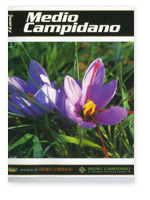Skip navigation bar and go to contents
Vivere la campagna
 Agricoltura
Agricoltura
 Ambiente
Ambiente
 Bilancio e Patrimonio
Bilancio e Patrimonio
 Consigliera di Parità
Consigliera di Parità
 Cultura
Cultura
 Formazione Professionale
Formazione Professionale
 Immigrazione/Emigrazione
Immigrazione/Emigrazione
 Innovazione Tecnologica
Innovazione Tecnologica
 Lavori pubblici e Viabilità
Lavori pubblici e Viabilità
 Lavoro
Lavoro
 Personale
Personale
 Pianificazione Territoriale
Pianificazione Territoriale
 Politiche giovanili
Politiche giovanili
 Politiche Sociali
Politiche Sociali
 Protezione civile
Protezione civile
 Pubblica Istruzione
Pubblica Istruzione
 Sport
Sport
 SUAP
SUAP
 Trasporti
Trasporti
 Turismo
Turismo
 URP
URP

n. 26/2009 -
The social and economic upheaval of the 20th century had a deep impact on the lifestyle and rhythms of the Sardinian community, modifying urban layout, economic activities and social relationships. However, these changes have been less extensive in the rural world, which has managed to keep alive many of its traditional values, handed down from generation to generation and which are still to be found in the middle Campidano and in the Marmilla area. The Medio Campidano province has no main city acting as a pole of attraction, rather we find scattered towns and villages whose urban layout and dwelling style are closely linked to the local farming economy. The layout of each town follows the land profiles and revolves around some main centres consisting of the church (often accompanied by other religious buildings), the town hall and the Monte Granatico (grain cooperative).The houses "a corte" (built round a court-yard), were designed to facilitate farm-related activities and preserve the family 's privacy. These houses are always single family dwellings, built along the narrow, winding roads, with one main arched gateway, and are enclosed by high walls without windows facing the street. The gate, which was wide to allow the passage of carts and animals, led to a cobble-stone courtyard; to the sides were areas for storing farming tools and processing farm produce, opposite the entrance was an arched portico, sa lolla, on to which opened the doors and windows of the rooms. This type of building was usually single storey, with at times an attic area under the roof used as a warehouse for produce storage. Construction material, apart from the stone available in the territory (basalt, limestone etc.), consisted of mud bricks or ladiri, made by mixing mud with chopped straw and left to dry for three weeks. The Italian Association of Earthern Architecture Cities (Associazione Nazionale Città della Terra Cruda) has been set up in the Campidano with headquarters at Samassi, the aim being to protect and spread the use of the traditional adobe brick, which is enjoying renewed popularity due to its excellent thermal and sound insulation properties. With a fascination all of its own is the Maiorchino neighbourhood of Villamar, built in the 1500s and 1600s by ''grain merchants" from the island of Majorca.